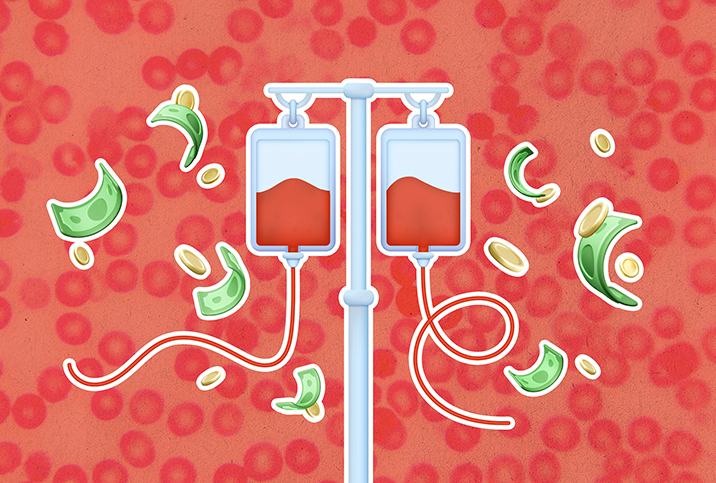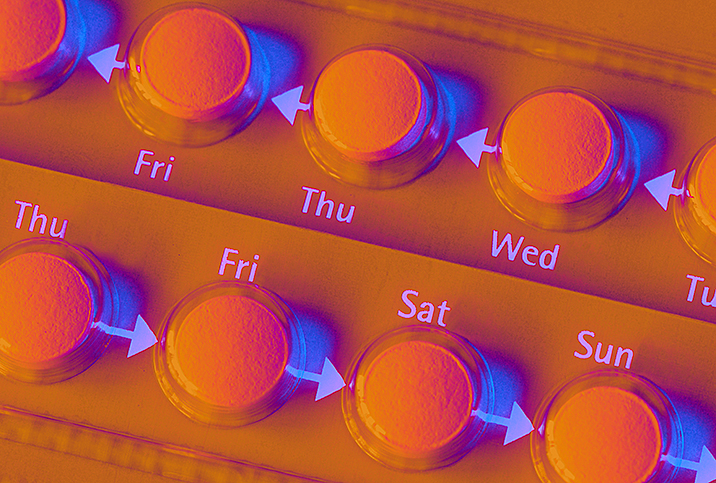Understanding Your Cord Blood Banking Options

When developing your birth plan, one of the items to consider is whether you want to donate, store or destroy the umbilical cord blood.
Let's take a step back for a minute, though. What is cord blood and why might you bank it?
After birth, cord blood is the blood left in the umbilical cord. It contains valuable stem cells that can grow into several different kinds of cells, including bone marrow cells, blood cells and brain cells. Therefore, it can be instrumental in treating certain diseases, such as cancer and autoimmune disorders.
"Cord blood has been used for more than 25 years for transplant in serious situations, such as leukemia, lymphoma and other cancers," said Monte Swarup, M.D., a board-certified OB-GYN and founder of HPD Rx, a health supplement company in Santa Monica, California.
Cord blood has many advantages over bone marrow stem cells, which are also used in such situations. Cord blood stem cells are easy and painless to collect and the process is much more straightforward than collecting stem cells from bone marrow.
Cord blood stem cells are less likely than bone marrow stem cells to be rejected, and there is a decreased risk of transmitting infectious diseases. Cord blood is somewhat immature, so it is less likely to be rejected through the transplant process, Swarup explained.
These umbilical cord stem cells can be lifesaving, but there are factors you need to consider if you decide to bank your baby's cord blood.
Talk to your doctor in advance
You can discuss donation and storage of cord blood at any time during pregnancy with your doctor or midwife, however, earlier is better, advised Edward H. Springel, M.D., a maternal-fetal medicine specialist and the medical director of labor and delivery at VCU Health, part of Virginia Commonwealth University in Richmond.
"You should provide adequate time to decide if cord blood collection is right for you," Springel said. "You need time to choose a cord blood bank and plan for storage, to obtain the necessary supplies from the bank for cord blood collection, and to give the provider time to review the collection procedures."
Ideally, this is done late in the second trimester—around 28 weeks of pregnancy—but conversations can begin from the start of pregnancy, Springel recommended.
Public vs. private cord blood banking
An important aspect to understand about cord blood banking is that there are two options for storing cord blood: public and private banks.
"Patients should research these options and discuss them with the doctor or midwife because they serve different purposes," Springel advised.
Private cord blood banking
Private banking involves storing cord blood for the family's future use.
"Storing your own family blood can give a kind of 'biologic insurance,' especially for a sibling, for which there is a great likelihood of match if needed," Swarup stated.
However, as you can imagine, private banking comes at a cost. Private banks usually have a collection fee of thousands of dollars, then a yearly storage fee of hundreds of dollars. Parents considering private banking should think through the likelihood that the cord blood will be useful for their child or a family member and weigh it against the financial costs, Springel advised.
"If there is an individual or condition in the family that may benefit from cord blood banking—certain genetic diseases or blood cancers—it is more reasonable to store the blood privately," Springel said.
However, for most families, there is no known genetic precondition, so it's very unlikely someone will use the cord blood, he added. When looking at the statistics, Springel stated the chance that the newborn will use the blood later in life is about 4 in 10,000, and the chance that a family member will use the blood is about 7 in 10,000.
"Often, the blood cannot be used in the same newborn later in life for genetic diseases because the cord blood will contain the same genetic makeup or precancerous conditions," Springel said, advising people to also consider treating conditions with alternative sources of stem cells, such as blood or bone marrow donation from a different individual.
Public cord blood banking
"Public banks are like traditional blood banks where the blood is accessed based upon need by the general population and a donating patient will not necessarily have access to their own sample," Swarup said.
Public cord blood banking does not require any payment.
"Parents donating to a public bank do so altruistically and do not choose which patient receives the blood," Springel said.
There are 28 public umbilical cord blood banks in North America, according to the American College of Obstetricians and Gynecologists (ACOG). The National Marrow Donor Program maintains a list of hospitals that work with the network of public umbilical cord blood banks.
Public cord blood banking has societal value because if someone in need finds a close enough genetic match, the cord blood may provide a lifesaving resource for that individual, Springel explained.
Cord blood can treat a limited number of genetic disorders, such as inborn errors of metabolism, hemoglobinopathies and certain blood malignancies.
"Public cord blood donation increases the chances that the cord blood can be used to help someone affected by a genetic disease or malignancy as it is available for the entire population," Springel said.
There can also be a difference in the quality of the cord blood stored when comparing private and public banking. Publicly banked cord blood is subject to strict requirements and regulations from the Food and Drug Administration (FDA). All cord blood stored publicly must be disease-free and contain a minimum number of cells.
Private banks do not always meet the FDA's strict criteria and standards. They often don't impose a lower limit on the number of cells collected, so you can't necessarily guarantee the banked cord blood will contain enough stem cells for a successful transplant.
The cord blood banking process
A collection kit needs to be available at delivery to obtain the blood. Swarup explained that if you bank your cord blood privately, your healthcare provider collects the specimen and uses a kit sent directly to you from the private bank. The hospital has the kits if you donate the cord blood publicly.
"After the baby has been delivered, the cord blood is obtained by placing a needle connected to a collection bag into the umbilical cord while it is still attached to the placenta," Springel said.
However, some conditions may prevent adequate collection.
"In some situations, like preterm birth or maternal hemorrhage, the collection of cord blood may not be feasible or even be contraindicated to protect the health of the newborn and mother," Springel said. "At least 40 milliliters must be collected to be adequate, which is not always possible."
A final note
Springel said the American Academy of Pediatrics and ACOG recommend against the routine collection of cord blood for private banking, given the lack of scientific data to support its use.
"Public cord blood banking is the recommended method of obtaining cord blood for most individuals," Springel stated. "Patients should research options for donation and discuss these options with their healthcare provider."


















